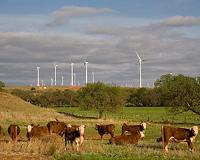 |
Barcelona, Spain (SPX) May 17, 2010 The car is not the only vehicle that can be propelled electrically. Lecturers at the Higher Nautical and Naval Engineering Technical School, Mikel Lejarza, Jose Ignacio Uriarte, Miguel ´┐Żngel Gomez Solaetxe and Juan Luis Larrabe are part of a research team working on an innovative project: to have a sailing boat that can undertake port manoeuvres (such as mooring and unmooring) using electric energy obtained from the movement of the wind in their sails when sailing and thus reduce the use of fuel and the emission of waste and noise. Having the research skills in this field, they are working against the clock, given that their goal is to have the prototype operational in two years. As Juan Luis Larrabe explained, the idea is for such vessels to take advantage of the energy from the wind movement in order to generate electricity: "The wind energy is gathered in the sails and the propeller operates as a turbine. This turbine is connected to an electric generator which charges up electric batteries in such a way that, when you want to propel the vessel and there is no wind, you can use this stored energy while avoiding using the internal combustion engine". It is a hybrid model and not exclusively electrical (the latter would mean reduced operational range, apart from the fact that the great volume of batteries required today would make it unviable). "You still have to have the traditional engines on board, but the idea is to use them as little as possible", explained Mr Larrabe.
Saltillo sail ship as a trial vessel In this first phase, most of the theoretical work required by the project was undertaken. As Mr Larrabe stated, "in order to characterise the vessel from a mathematical perspective and draw up a preliminary design". That is to say, they calculated what the various elements taking part in the hybridisation of the boat should be - the hull, the propeller, the hull-propeller interaction, the electrical/electronic machinery and the internal combustion engine. Then they put all this data together to "carry out simulations with different strategies of hybridisation to find out which of these might be the most efficient, from a theoretical perspective, for this vessel". They have also designed a navigation course from the port and which will be used in upcoming and more practical stages of the project.
Seeking funding In this way they can compare this data with that obtained in the future and, in this same scenario, with the hybrid models that they have mathematically designed. For this second simulation stage, the team will need the help of students from the school. Moreover, both for this phase as for the third - in which the prototype will be finalised -, it is essential to have funding. To this end, they are looking to collaboration with ancillary enterprises in the Basque naval engineering sector, a sector for which the project is a highly interesting one given that, as Mr Larrabe reminds us, "it could well be a new business model for a sector that is none too healthy".
Safer Outstanding in this section is the fact that the manoeuvres of the vessel are more reliable, having various available sources of energy, in case of any incident arising. As Mr Larrabe explained, "now we will have energy stored in different ways; in batteries, but also as has been done traditionally, with fossil fuel. In this way we gain in safety".
Share This Article With Planet Earth
Related Links Basque Research Wind Energy News at Wind Daily
 Dakota Wind Energy Accepted Into Big Stone 2 Transmission Backfill
Dakota Wind Energy Accepted Into Big Stone 2 Transmission BackfillEden SD (SPX) May 10, 2010 Dakota Wind Energy, along with its managing member, National Wind, have announces the acceptance by the Midwest ISO ("MISO") of its 300 megawatt (MW) interconnection request into the Big Stone II Transmission backfill study group. Regional electrical transmission operator, MISO, identified wind projects that can utilize, or "backfill," the electrical capacity once reserved for the Big Stone II c ... read more |
|
| The content herein, unless otherwise known to be public domain, are Copyright 1995-2010 - SpaceDaily. AFP and UPI Wire Stories are copyright Agence France-Presse and United Press International. ESA Portal Reports are copyright European Space Agency. All NASA sourced material is public domain. Additional copyrights may apply in whole or part to other bona fide parties. Advertising does not imply endorsement,agreement or approval of any opinions, statements or information provided by SpaceDaily on any Web page published or hosted by SpaceDaily. Privacy Statement |